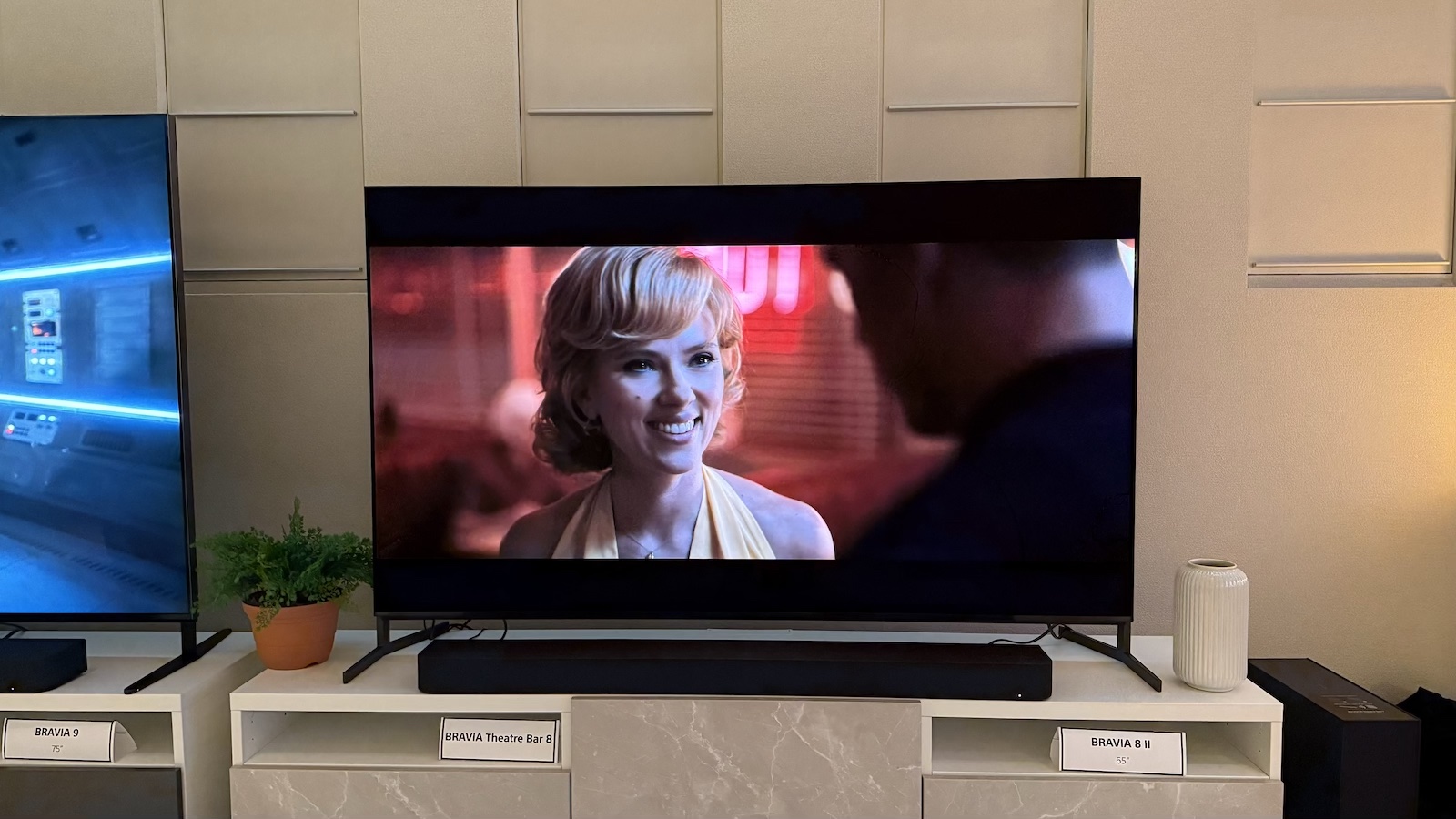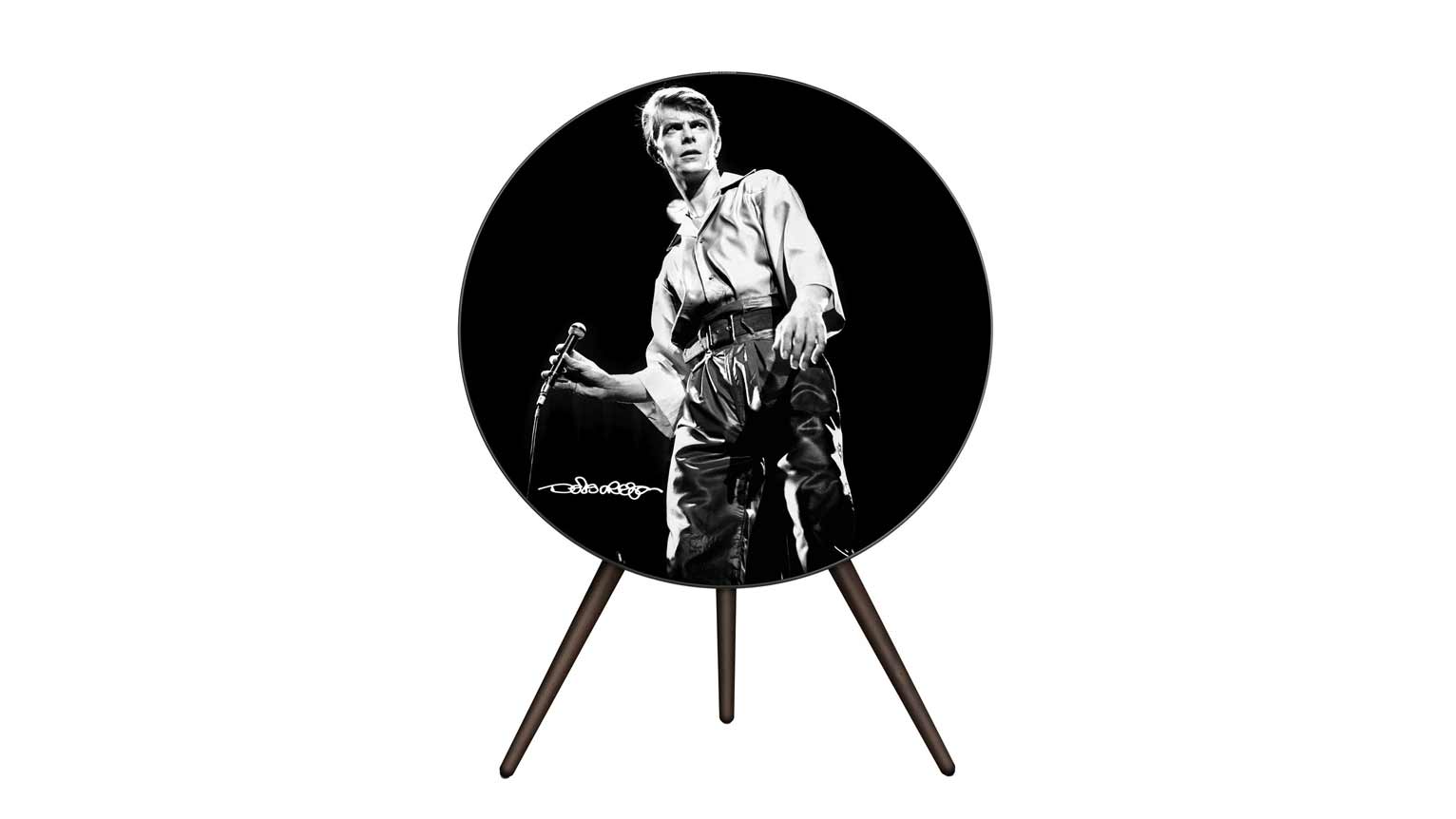Early Verdict
While we will have to wait until we have it in our own test rooms for independent, comparative testing, the Bravia 8 II at this stage looks like a meaningful upgrade on one of the best TVs ever made
Pros
- +
Brighter and more refined than the A95L
- +
More affordable than the A95L in the UK
- +
Should sound just as good
Cons
- -
Much more expensive than the A95L in the US
- -
New Primary RGB Tandem OLEDs will be hard to beat
- -
Still just two HDMI 2.1 sockets
Why you can trust What Hi-Fi?
I’ve already been on the record as saying that the Sony A95L is my favourite TV of the past couple of years. So, while I understood the reasoning (primarily that the A95L arrived late in 2023), I was really disappointed that an even better successor didn’t materialise last year.
Now, though, the A95L’s successor is here; but it’s not quite what I was expecting. What I was expecting was a Bravia 10 range-topper to sit above the Bravia 9 Mini LED model and usher in a new dawn for OLED TV technology.
But Sony appears to be saving the Bravia 10 name for its RGB Mini LED TV, which I have already seen in prototype form but isn’t expected to hit shops until next year.
So, the A95L’s replacement is instead the Bravia 8 II. That really suggests that it’s the replacement for the Bravia 8… which it isn’t.
It also suggests a less ambitious approach than I was expecting. And, in a way, that’s what it is. But I also think that that's actually the better approach for buyers – because the Bravia 8 II, which sports the latest QD-OLED panel, is brighter than the A95L and can reproduce more colours than the A95L, while at the same time being cheaper than the A95L – at least in the UK.
And, while we will have to wait until we get it into our test rooms for rigorous, independent testing, when I saw it in action in Sony’s Tokyo HQ in February, the Bravia 8 II looked clearly better than the A95L.
Recent updates
10th April 2025
Added confirmed US pricing information to the 'price' section – and it's not good news
Price
At the point when I first published this piece, Sony hadn't confirmed any pricing for the Bravia 8 II (which also carries the model number K65XR8M2). It had promised, though, that it would be 'more affordable than the A95L'.
My hunch was that it would come in around 10 per cent cheaper than the A95L was at launch, which would equate to prices of roughly £2699 / $2500 / AU$4795 for the 55-inch model and around £3399 / $3200 / AU$5395 for the 65-inch version.
Well, I was wrong, and in a good way – at least for the UK. Official UK pricing has been announced and the Bravia 8 is a fair bit cheaper than I had anticipated.
However, US pricing has now also been announced, and it's very bad news. Not only is the Bravia 8 II not cheaper in the US than the A95L was at launch – it's in fact a lot more expensive.
Here's the pricing comparison between the Bravia 8 II, the A95L that it replaces and the Bravia 8 that it will sit above:
Size | Sony Bravia 8 | Sony Bravia 8 II | Sony A95L |
|---|---|---|---|
55 | £2199 / $2000 / AU$2995 | £2499 / $3500 / AU$TBC | £2999 / $2800 / AU$5295 |
65 | £2699 / $2800 / AU$3995 | £2999 / $4000 / AU$TBC | £3699 / $3500 / AU$5995 |
77 | £3999 / $3900 / AU$6495 | No such model | £5999 / $5000 / AU$9495 |
So, in the UK, the 55-inch version of the Bravia 8 II is almost 17 per cent cheaper than the A95L was at launch, and the 65-inch model about 19 per cent cheaper (unfortunately, there's no 77-inch version of the Bravia 8 II).
But in the US, the 55-inch Bravia 8 II is a whopping 25 per cent more expensive than the A95L was at launch, while the 65-inch version is 14 per cent more expensive.
Australian pricing still hasn't been released, so we wait with bated breath to find out whether it will follow the example set by the UK or the US.
Of course, more important than how the Bravia 8 II's pricing compares with that of its fellow Sony TVs, is how it compares with rivals such as the LG G5 and Samsung S95F.
You can see the pricing that we have so far for all three models here:
Size | Sony Bravia 8 II | LG G5 | Samsung S95F |
|---|---|---|---|
55 | £2499 / $3500 / AU$TBC | £2400 / $2500 / AU$TBC | £TBC / $2300 / AU$TBC |
65 | £2999 / $4000 / AU$TBC | £3300 / $3400 / AU$TBC | £TBC / $3300 / AU$TBC |
77 | No such model | £4500 / $4500 / AU$TBC | £TBC / $4500 / AU$TBC |
83 | No such model | £7000 / $6500 / AU$TBC | No such model |
97 | No such model | £25,000 / $25,000 / AU$TBC | No such model |
Design
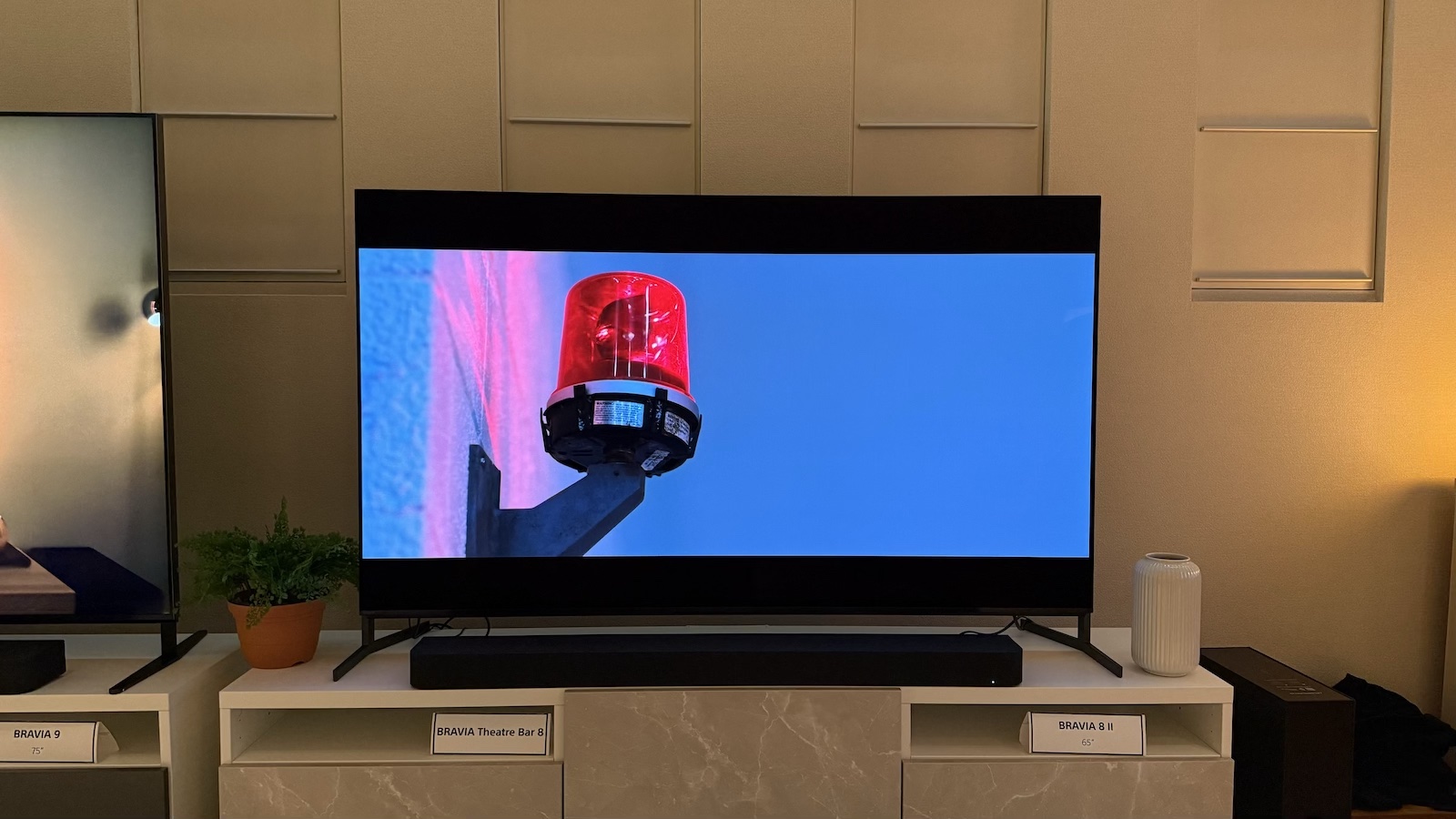
The Bravia 8 II looks very similar to the A95L it replaces. One suspects that Sony decided to reuse as much of the chassis as possible as one way to reduce costs so that it could sell the new model for less than its predecessor.
Compared with the flagship OLEDs that Sony produced before the A95L, the design is relatively conventional – but it is also quite smart and premium compared with the many rivals.
Sony also points to the Bravia 8 II as the slimmest TV in its lineup. At 3.4cm, though, it is the same thickness as the outgoing A95L and significantly thicker than rivals such as the Samsung S95F (1.1cm) and LG G5 (2.4cm). At least some of that comparative thickness is probably due, as with the A95L, to the actuator-based sound system and custom heatsink.
Like the A95L, the Bravia 8 II has blade-style feet that can be positioned only at the furthest extremes of the TV’s bottom edge. Sony claims that’s great for preventing reflections, but it also means the TV can’t be placed on furniture narrower than the set's width, which is 122cm for the 55-inch model and 145cm for the 65-inch version.
While the feet can’t be positioned closer to the centre of the chassis, they can be extended to lift the TV a few centimetres so that a soundbar can be positioned in front of the TV without obstructing the screen.
Features
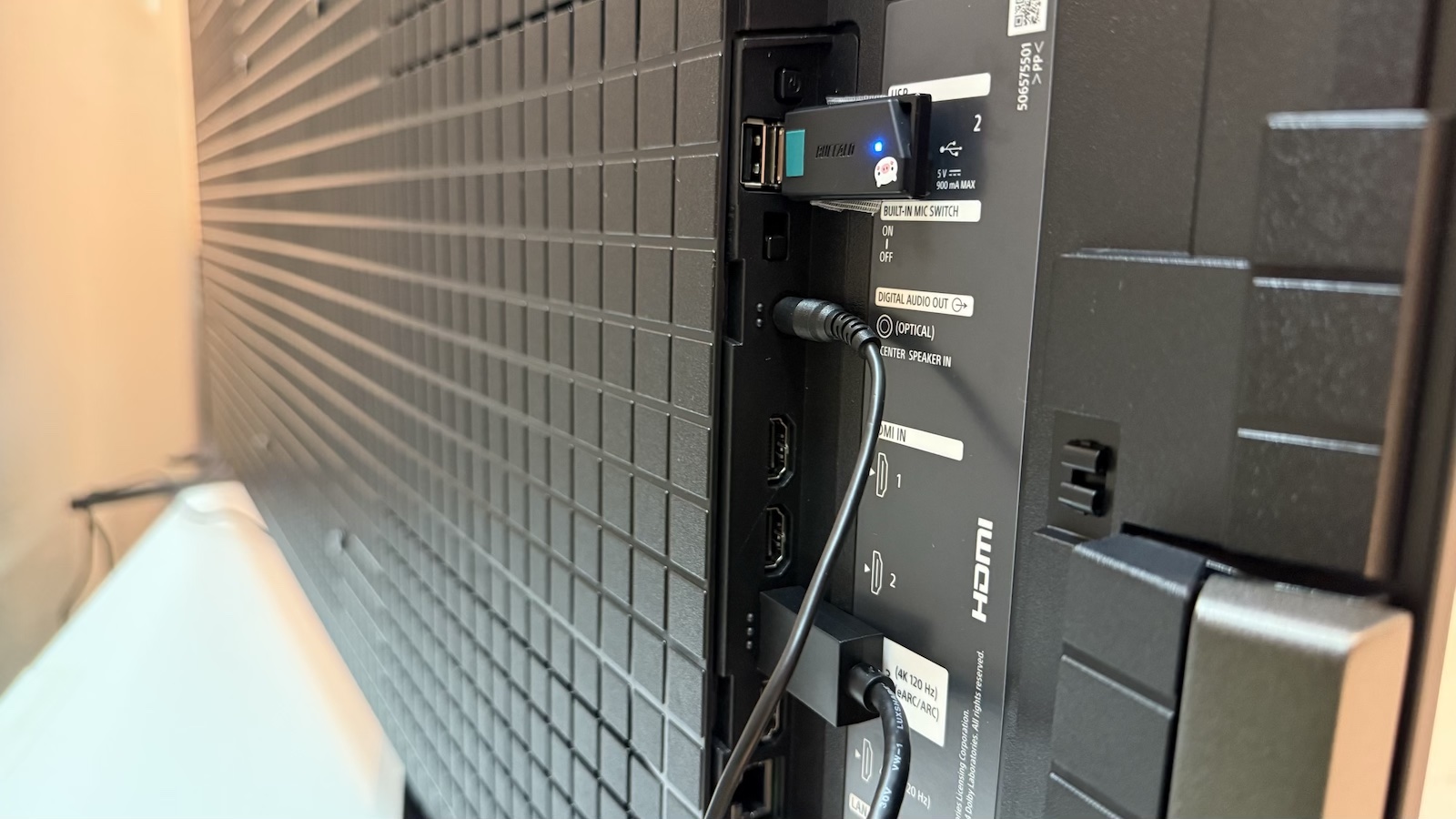
The big thing here, of course, is that the Bravia 8 II uses what Sony refers to as ‘the latest QD-OLED panel’. This, combined with Sony’s processing, results in the new model being able to go 25 per cent brighter than its A95L QD-OLED predecessor in terms of peak brightness, and 50 per cent brighter than the Bravia 8 W-OLED.
With this increased brightness comes increased colour volume, and Sony claims to have also engineered big improvements to dark gradation (essentially very dark shading).
As you would expect, the Bravia 8 II is powered by Sony’s XR Processor which, like every rival TV processor right now, uses AI, most notably in what the brand refers to as ‘an AI scene recognition system’. This new, 2025 feature, which is exclusive to the Bravia 8 II and Bravia 5, apparently ‘detects and analyses data with flawless accuracy, then optimises the picture for ultimate realism’.
Sony has gone big in recent years on what it calls ‘Studio Calibrated Modes’ which, it says, deliver content from their respective streaming services as it was meant to be seen. So it’s no surprise to see the Netflix Adaptive Calibrated Mode, Prime Video Calibrated Mode and Sony Pictures Core Calibrated Mode all present on the Bravia 8 II.
The TV also supports Dolby Vision and Atmos, and is IMAX Enhanced certified. As with all previous Sony TVs, it does not support HDR10+, but the standard HDR10 and HLG status HDR formats are of course on board.
Unfortunately, precious little has changed on the gaming front. Yes, the TV supports 4K/120Hz, VRR and ALLM, and it has a Dolby Vision Game mode. The ‘Perfect for PlayStation 5’ functionality remains, too, which means the TV will automatically dial in pretty accurate HDR settings when connected to a PS5.
The problem is that there are still just two full-bandwidth HDMI 2.1 sockets and one of those doubles as the eARC port so will be taken up by your soundbar or other sound system, should you choose to add one. That will leave just one top-specification input for your console or gaming PC.
That’s fine if you have just one such device, but if you have more, you’re going to have to do some irritating cable swapping or accept the extras running at less than their full abilities.
Picture quality
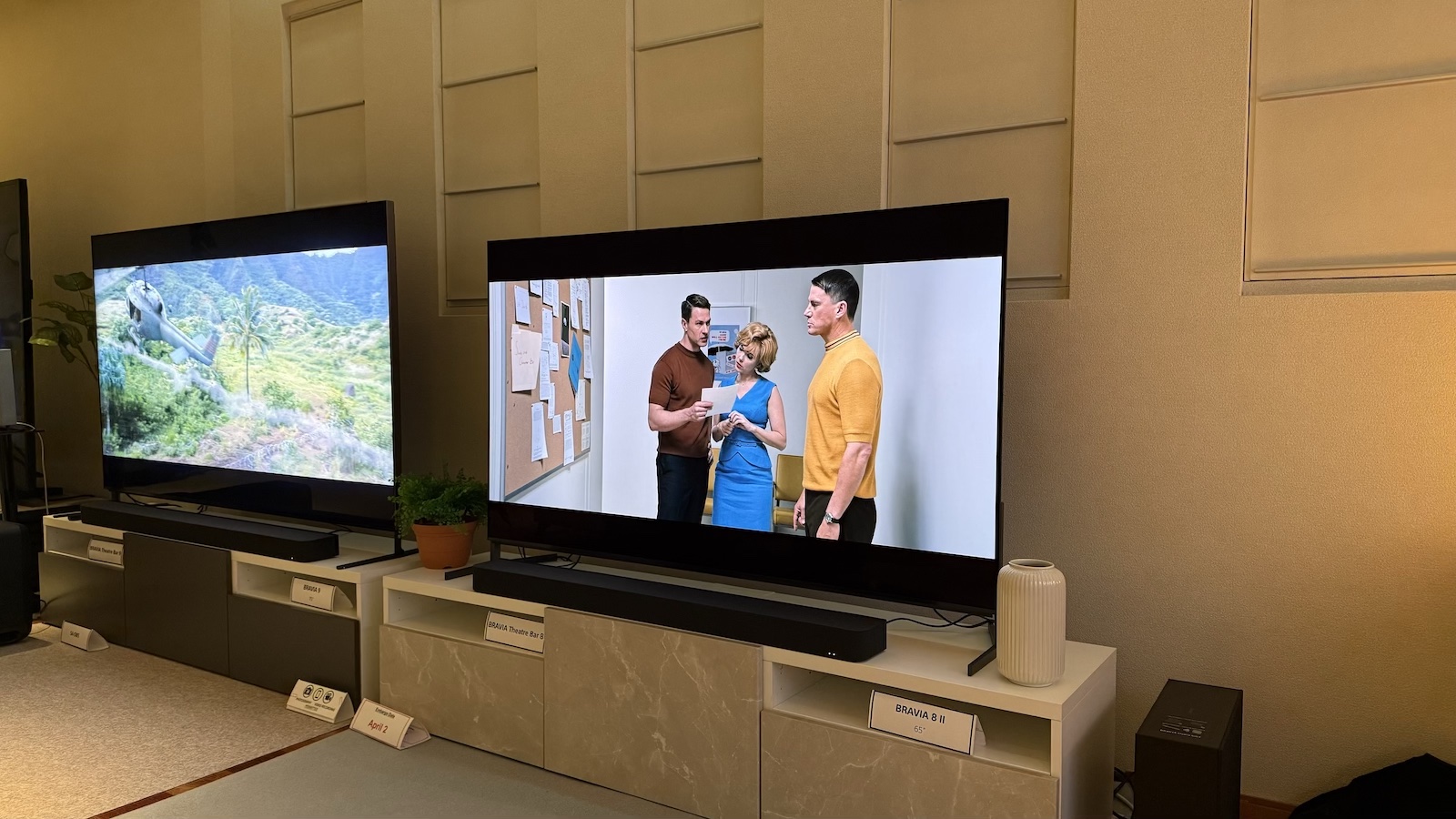
For the picture demonstration at the Tokyo HQ, Sony’s engineers had set up the new Bravia 8 alongside the A95L, the Samsung S95D (also a QD-OLED, of course), the LG G4 MLA OLED, and Sony’s own BVM-HX3110 mastering monitor, which is the new reference display in Hollywood.
First up, content-wise, was Alpha, the little-known Kodi Smit-McPhee movie about a boy and his wolf that is often wheeled out for TV demos on account of its unusual mastering to a brightness of 4000 nits.
While the Bravia 8 II is certainly not expected to hit anything close to 4000 nits (something in the region of around 2200 nits seems far more likely, though Sony won’t confirm), it reproduced the bright sun from the clip far more effectively than any of the other TVs – not just in terms of brightness, but also bright detail and colour vibrancy.
The shape of the sun was clearly visible from the Bravia 8 II but murky and indistinct from its rivals, and even the very brightest parts maintained a warmth that the LG G4 in particular couldn’t match.
The next clip, from Fantastic Beasts and Where to Find Them, was used to demonstrate the low-light performance of the TVs. As with the bright scene, the Bravia 8 II couldn’t match the mastering monitor – we wouldn’t expect it to – but it did have the beating of its rival TVs in terms of shadow detail and low-light colour volume. The hues in skin tones and scenery were clear, consistent and natural in even the shadiest parts of the picture.
Sony had put the TVs into their more cinematically authentic modes (‘Cinema’ in the case of its own sets) for the above clips, but the engineers then loaded up some HDR demo clips and switched the TVs to their brightest and most vivid presets, just to show how each performed when let off the leash.
Here, the Bravia 8 II looked genuinely exceptional. The bubbles in one of the demo clips looked super-reflective and three-dimensional, and the vibrancy of the background colours was unmatched by the other TVs on show without veering into ludicrous degrees of luminosity.
The upgrade from the A95L wasn’t staggering in any of the material shown, but the extra brightness of the Bravia 8 II was certainly visible, particularly in the bright, white stones of the next demo clip.
Overall, the Bravia 8 II seems to retain the general character of the A95L, while adding an extra degree of pop, crispness and low-light subtlety that is noticeable and welcome. It also fairly trounced the Samsung S95D and LG G4 in Sony’s demonstrations; but you would sort of expect that and we will of course wait until we get a final Bravia 8 II sample in our test rooms for independent, comparative testing against its 2025 contemporaries before we pass anything approaching a final verdict on its performance.
Sound quality
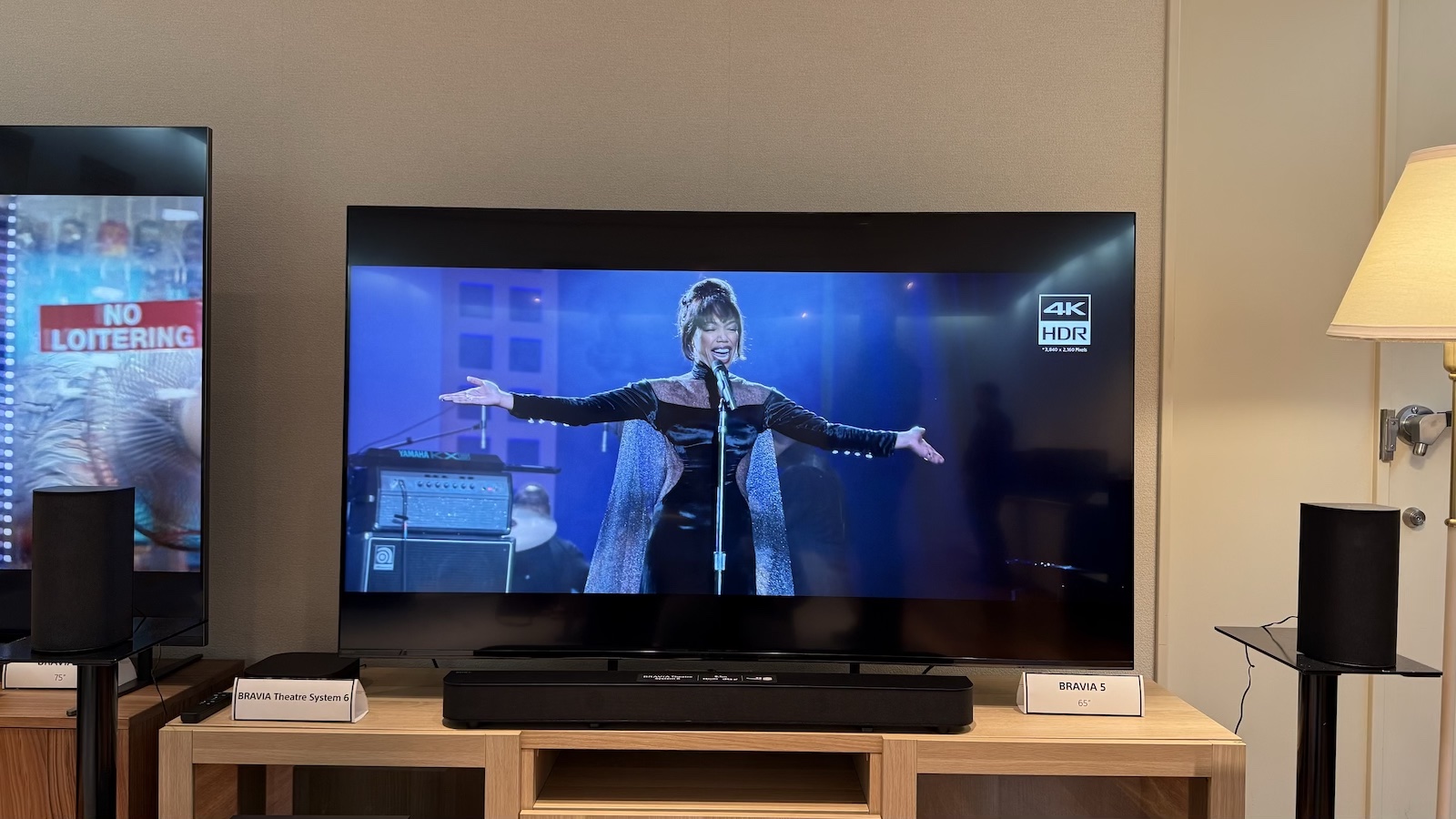
An audio demonstration wasn’t provided during my visit to Sony HQ in February, but Sony says that the Bravia 8 II has the same setup as the A95L and for all intents and purposes sounds the same.
Said setup consists of two actuators and two subwoofers (the Bravia 8 W-OLED features two lesser actuators and one sub) and, in the A95L, represents one of the best built-in TV sound systems currently available.
The actuators vibrate the actual screen in order to make sound, which ties the audio and video spatially in a way that rival solutions can’t match, and the A95L also sounds direct, detailed and dynamic by TV standards. It is capable of delivering a pseudo Atmos effect, too, with the audio stretching beyond the confines of the chassis.
Our one grumble about the A95L’s audio performance was that it was a bit bass-light, and we suggested that Sony should make it possible to connect one of its wireless subwoofers directly to the TV in order to boost the low-end performance.
Alas, the company has chosen not to implement that suggestion, so anyone looking for serious cinematic bombast will still need to add a dedicated soundbar or speaker system. Choose a Sony option such as the excellent Bravia Theatre Bar 9 or the unusual Bravia Theatre Quad and you can set the TV and sound system so that their speakers work in harmony – though this sort of thing often creates a tonal mismatch that is best avoided. We will be testing it out as part of our full review.
Early verdict
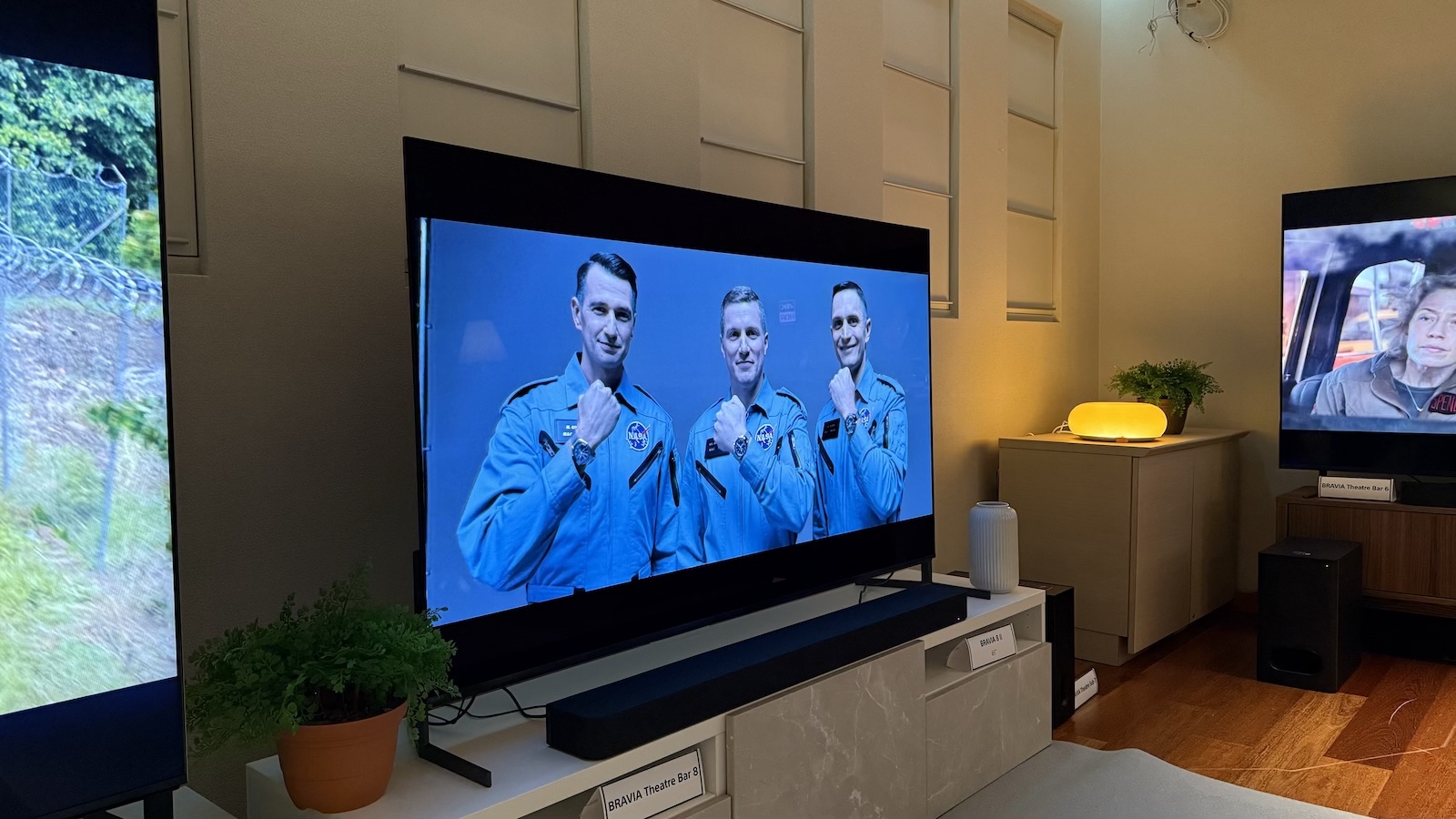
While I was initially a little disappointed with Sony’s decision not to go all-out with the A95L’s replacement and make it the all-singing, all-dancing Bravia 10, I have come around to thinking that its approach is actually better for buyers.
The A95L is still, to my mind, the best TV you can currently buy, and this Bravia 8 II replacement is (according to Sony itself and the demonstrations I have seen) brighter, more refined and cheaper.
It’s still going to be an expensive TV and we will of course have to put it through its paces in our own test rooms before delivering a final verdict on its performance, but the Bravia 8 II at this stage appears to be an all-round better version of the best TV around. That’s worth getting excited about no matter the name.
Recent updates
10th April 2025
Added confirmed US pricing information to the 'price' section – and it's not good news
3rd April 2025
Added confirmed UK pricing information and comparisons with existing Sony models and the LG G5
MORE:
Here's Sony's 2025 TV lineup in full
Check out our first impressions of the Sony Bravia 5
And these are the best TVs you can buy right now
Tom Parsons has been writing about TV, AV and hi-fi products (not to mention plenty of other 'gadgets' and even cars) for over 15 years. He began his career as What Hi-Fi?'s Staff Writer and is now the TV and AV Editor. In between, he worked as Reviews Editor and then Deputy Editor at Stuff, and over the years has had his work featured in publications such as T3, The Telegraph and Louder. He's also appeared on BBC News, BBC World Service, BBC Radio 4 and Sky Swipe. In his spare time Tom is a runner and gamer.
What is a hands on review?
'Hands on reviews' are a journalist's first impressions of a piece of kit based on spending some time with it. It may be just a few moments, or a few hours. The important thing is we have been able to play with it ourselves and can give you some sense of what it's like to use, even if it's only an embryonic view.
You must confirm your public display name before commenting
Please logout and then login again, you will then be prompted to enter your display name.
